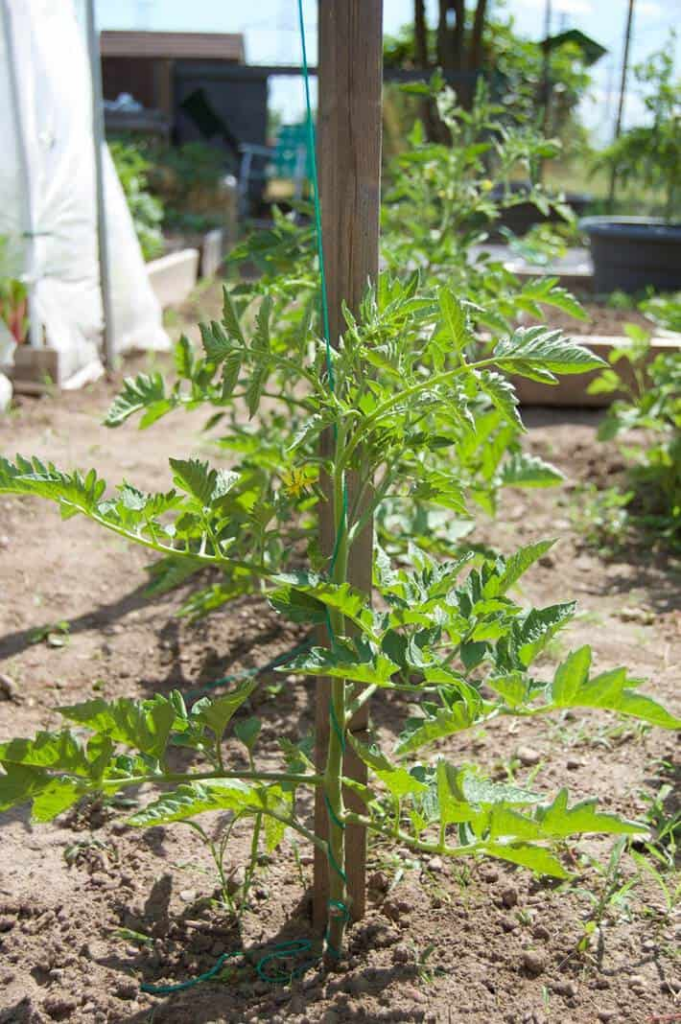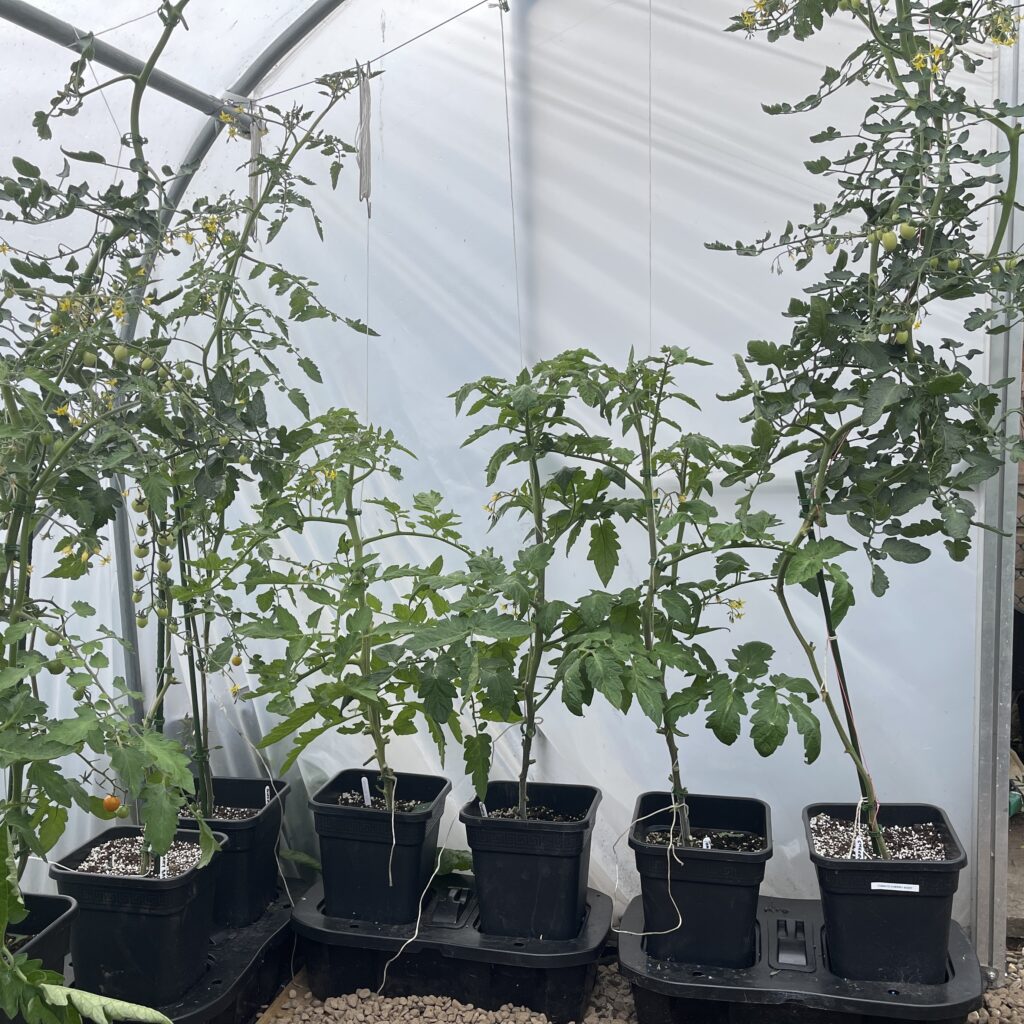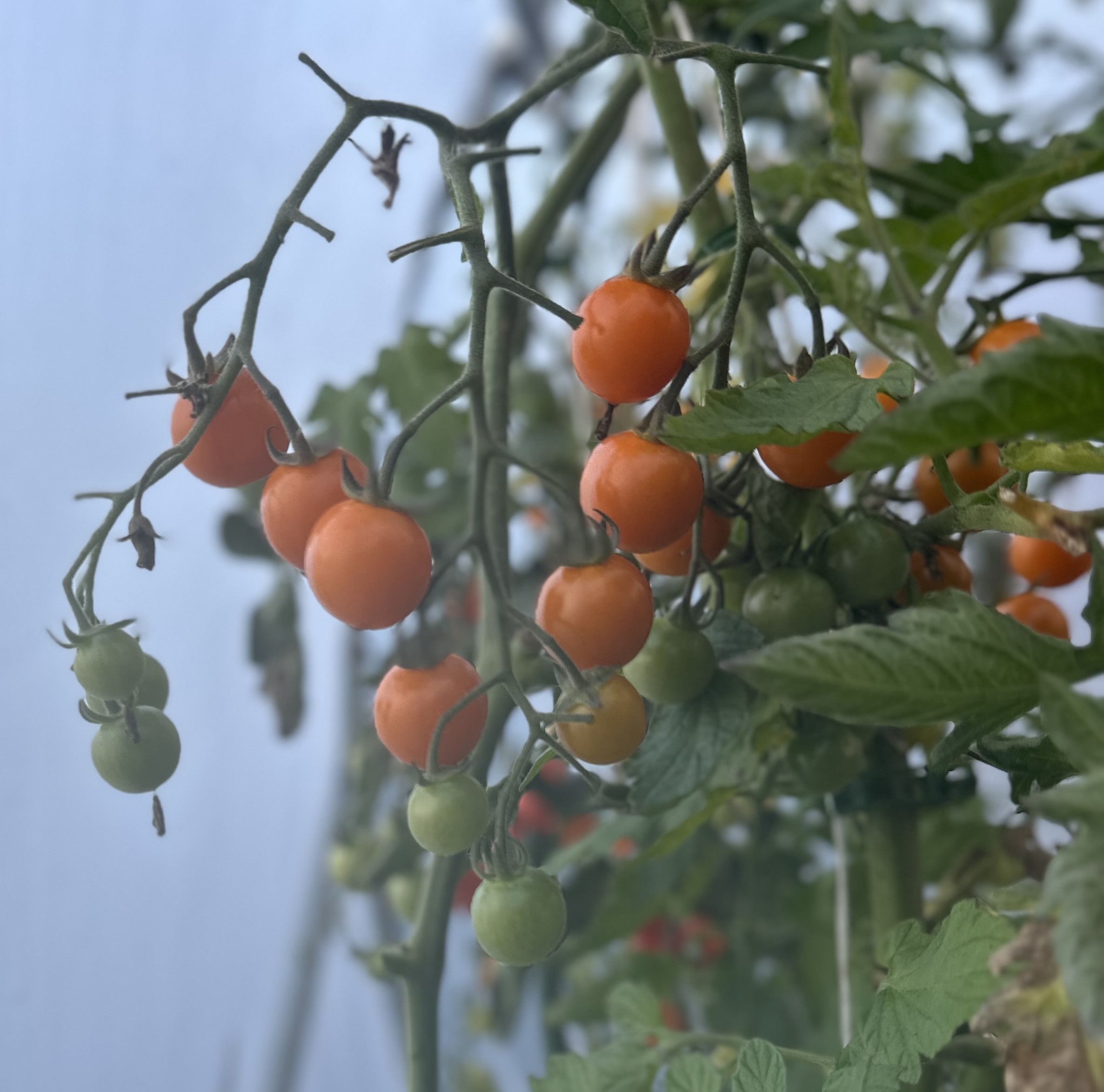As your tomato plants are most likely in there final growing positioning, flourishing in the warmth of summer, it’s time to shift your focus to maximizing your harvest. This guide offers a treasure trove of mid-season tomato care techniques to nurture your existing plants and help them produce a bounty of delicious tomatoes. From managing side shoots to mastering the art of watering and ventilation, these expert tips will equip you with the knowledge to get the most out of your tomato crop. Let’s get growing!
Managing Side Shoots

Side shoots, or “suckers,” are the small shoots that grow between the main stem and the leaf branches. Removing these can help your tomato plant focus its energy on producing fruit. But don’t just discard them—replanting side shoots can give you free tomato plants! Here’s how to do it:
- Identify and Remove: Pinch off side shoots when they are about 5-10 cm long.
- Replant: Place them in water or directly into moist compost. They will develop roots within a few days.
- Transplant: Once the new plants have established roots, plant them in your garden.
Training Up a Wire

Training your tomato plants to grow vertically saves space and improves air circulation, reducing the risk of disease. Use a sturdy wire or trellis to support your plants:
- Start Early: Begin training your tomatoes when they are young.
- Winding Technique: Wind the main stem around the wire as it grows. For larger tomato varieties, you might need to support the stems with clips to prevent breakage.
Seaweed Foliar Feed: Pros and Cons
Seaweed foliar feed is an effective and economical option for tomato growers. Here’s why:
- Pros: Seaweed is rich in micronutrients, promotes vigorous growth, enhances disease resistance, and can improve fruit quality.
- Cons: None significant, but weather conditions must be considered. Apply the feed during a warm part of the day so it can dry quickly, reducing the risk of disease.
Spraying diluted seaweed on open wounds after pruning helps in faster healing and protects the plant from infections.
Daily Feeding with Diluted Nutrients
Instead of a heavy weekly feed, consider a more diluted daily feed. This method provides consistent nutrients and can be less stressful for the plants:
- Consistency: Ensure the feed is well diluted to avoid nutrient burn.
- Benefits: Promotes steady growth and can lead to a bountiful crop.
Pruning and Plant Health
Regularly inspect your tomato plants and remove any unhealthy looking foliage. Dead or diseased leaves can harbor pests and diseases, spreading them to the rest of your plant.
Consistent Watering

Tomatoes need consistent watering to avoid issues like blossom end rot and cracking. Here are some tips:
- Deep Watering: Ensure the water reaches the root zone, about 15-20 cm deep.
- Automated Systems: Consider using an automated system like Quadgrows, available at Grown Local, to maintain consistent moisture levels.
Humidity Management and Airflow: The Keys to Disease Prevention

Maintaining optimal humidity levels and good air circulation are critical for preventing fungal diseases like blight and powdery mildew in your greenhouse. Here’s why:
- Target Humidity: Aim for a range of 60-85% humidity during the day and 65-75% at night. Straying too far outside this range can stress plants and encourage disease growth.
- Ventilation is Key: The most effective way to manage humidity is by strategically opening doors, windows, and louver vents. This promotes airflow, which helps regulate both temperature and humidity.
- Cross-Ventilation is Best: Open vents on opposite sides of the greenhouse to create a cross breeze. This prevents stagnant, humid air pockets from forming around your plants, which can harbor disease.
- Plant Spacing Matters: Proper spacing between plants allows for good air circulation throughout the canopy. This prevents the creation of microclimates – small areas with different humidity levels – that can also harbor disease.
Mulching for Healthier Tomatoes
Adding a thick layer of organic mulch around your tomato plants provides numerous benefits:
- Retains Moisture: Mulch reduces evaporation from the soil surface, keeping the roots consistently moist and reducing the need for frequent watering.
- Regulates Soil Temperature: A layer of mulch insulates the soil, keeping it cooler in summer and warmer in winter. This protects the roots from temperature extremes.
- Suppresses Weeds: Mulch blocks sunlight, preventing weed seeds from germinating. This means less competition for water and nutrients.
- Adds Nutrients: As organic mulches break down, they release nutrients into the soil, acting as a slow-release fertilizer.
- Prevents Disease: Mulch forms a barrier between the soil and the plant, preventing soil-borne diseases from splashing onto the leaves.
For best results, apply an 8-12 cm layer of organic mulch, such as straw, shredded leaves, or grass clippings, around your tomato plants. Leave a small gap around the stem to prevent rotting.
Picking the Right Feed
Choose a good tomato fertilizer. Grown Local offers NutriGold, an excellent choice formulated to provide a balanced mix of nutrients specifically tailored to the needs of tomato plants, including nitrogen, phosphorus, potassium, calcium, and magnesium.
Follow these tips and you’ll be well on your way to a bountiful tomato harvest. Happy growing!

